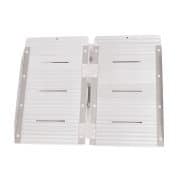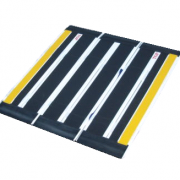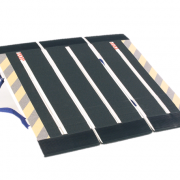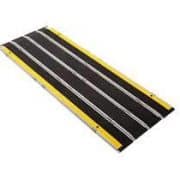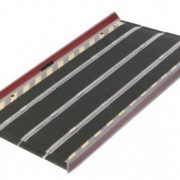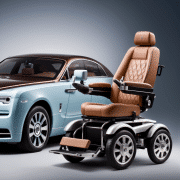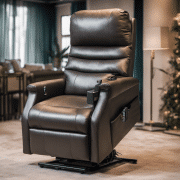Best Mobility Scooter Ramps in Australia | A Buying Guide
Of the nearly 4.4 million Australians with a disability, 77% (or 3 in 4 people) live with a physical disability. Further, physical disabilities and mobility issues become more prevalent as we age. Mobility scooter ramps improve accessibility to public and private areas for people with physical disabilities and injuries. If your home is not accessible...
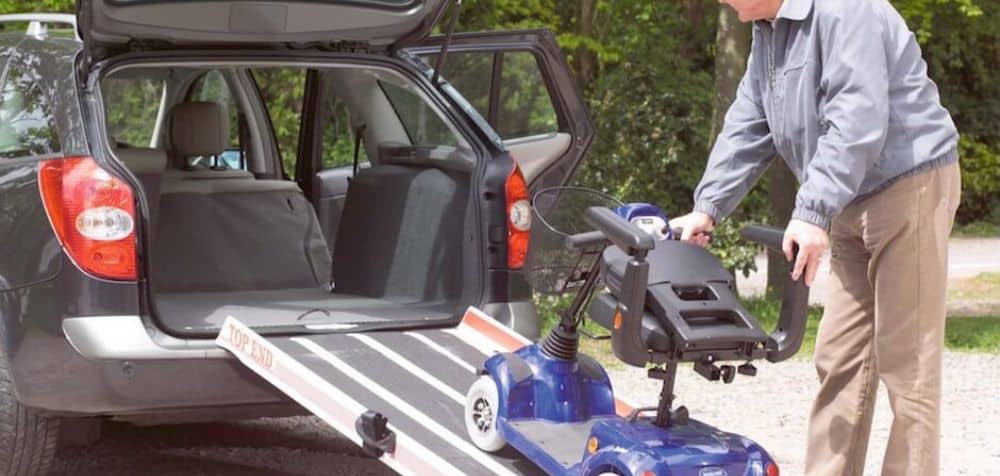
Of the nearly 4.4 million Australians with a disability, 77% (or 3 in 4 people) live with a physical disability. Further, physical disabilities and mobility issues become more prevalent as we age. Mobility scooter ramps improve accessibility to public and private areas for people with physical disabilities and injuries.
If your home is not accessible for wheelchair or scooter users, you may wish to invest in mobility access ramps. This article discusses the different types of ramps for mobility scooters and provides expert tips for selecting the best option for you.
What are mobility scooter ramps?
Mobility access ramps are designed for use with mobility scooters, such as those stocked by Patient Handling. Also known as motorised wheelchairs or powered scooters, mobility scooters provide alternative transport to individuals with a disability, chronic illness, or injury.
Mobility access ramps are wide enough to accommodate people seated in wheelchairs and mobility scooters, and those who use walking canes and other assistive equipment. Access ramps for the elderly, injured, and those with a disability are often positioned over stairs, raised pavement kerbs, or thresholds.
These ramps can be used to overcome obstacles such as steps, curbs, and vehicles. They come in a variety of sizes and materials to suit different needs and environments. Various construction materials are used for disability ramps, such as steel, carbon fibre, and timber.
Additionally, some ramps can fold or be disassembled for easy transport. Using a mobility scooter ramp can greatly increase independence and accessibility for individuals with mobility impairments. Further, designs and features of mobility ramps for homes and care settings vary based on their intended use and portability requirements.
Why use a mobility scooter ramp?
A mobility scooter can benefit a user’s quality of life by enhancing independence and emotional wellbeing. A 2012 survey estimated that 13 in 1000 Australian adults use a mobility scooter, equating to approximately 213,000 users.
To support the prevalence of mobility scooter users, several Australian laws and standards have been introduced to regulate their safe use. Further, mobility scooter users must be able to access public areas as part of the Disability Discrimination Act 1992. This access is primarily facilitated by installing and maintaining wheelchair and mobility scooter ramps.
You can also purchase mobility ramps for homes or offices, such as Patient Handling’s wide range of scooter ramps. Mobility scooter ramps resolve issues with uneven or raised ground surfaces and make it easier for users to get over thresholds in a scooter or wheelchair. Further, some portable ramps for wheelchairs are a convenient and safe solution to transfer scooters or wheelchairs into or out of a vehicle.
What are the different types and features of mobility scooter ramps
Patient Handling stocks the main types of mobility scooter ramps and accessories, including portable ramps for stairs, thresholds and pavement kerbs. As discussed below, disability ramps are available in fixed and portable options with a range of design accessories, safety features, and construction materials.
Timber mobility access ramps
Custom timber ramps for mobility scooters and wheelchairs are a stylish way to improve the accessibility of your home, shop, or office. Mobility access ramps can complement new and existing buildings while also improving accessibility.
Timber access ramps for wheelchairs are equipped with safety features, such as barrier edges, handrails, and landings. You can often select the paint or timber stain colour to align with the design aesthetics of the building or your personal preferences.
Australian Standards AS1428.1 – 2009 specifies safety requirements for the construction of access ramps for wheelchairs. To ensure you comply with Australian Standards for fixed disability ramps, we recommend using a certified builder.
Carbon fibre portable ramps for wheelchairs and scooters
Ideal for use as a portable ramp for stairs around the home or when travelling, carbon fibre disability ramps are light and portable. Our range of strong yet lightweight Depac mobility access ramps is manufactured with uni-directional glass and carbon fibre materials. Depac mobility scooter ramps feature non-slip materials and are available with additional safety features, such as raised safety edges.
Aluminium portable ramp for wheelchairs and scooters
Ramps constructed of aluminium are another popular option for lightweight ramps for mobility scooters, wheelchairs, and other mobility devices. Patient Handling stocks the affordable, high-quality aluminium ramp by Peak Care that is easy to deploy and travel with. Aluminium mobility scooter ramps are available in both portable and fixed options.
Who can benefit from using mobility scooter ramps?
Access ramps for wheelchairs, mobility scooters, and other assistive equipment help make our society more inclusive and supportive for those with disabilities or limited mobility. This includes those with disabilities such as MS, cerebral palsy, muscular dystrophy, spinal cord injuries, and more. Caregivers and family members can also benefit from the use of a ramp, as it can make tasks such as loading a mobility scooter into a vehicle easier and more efficient.
Disability ramps ensure equal access to public spaces, such as shopping centres, libraries, hospitals, and other commercial environments. Further, wheelchair and mobility scooter ramps enable inclusivity and productivity in the workplace by supporting the needs of a diverse workforce.
Similarly, mobility ramps for homes and private care environments benefit individuals with a disability, injury, or limited mobility. Access ramps for the elderly and people with a disability also benefit carers by providing a safer environment and preventing falls and other injuries.
The benefits of wheelchair ramps for mobility
In addition to directly helping individuals with mobility issues, wheelchair and mobility scooter ramps benefit society more broadly, such as through the benefits outlined below.
Economic benefits of mobility scooter ramps
As mentioned earlier, about 4.4 million Australians (or 1 in 6 people) live with a disability. By ensuring your office, storefront, or business premises are scooter and wheelchair-friendly you are increasing potential patronage. This means more people will be able to view and potentially purchase your products or services, thereby boosting your business performance.
On a deeper level, equipping your business premises with ramps conveys that your company values inclusivity and diversity. This can increase the diversity of your workforce, enhance customer loyalty, boost community perceptions, and build brand value.
Compliance with Australian regulations
Under the Disability Discrimination Act 1992, all areas and facilities open to the public must be accessible to individuals with a disability. Further, Australian Standards AS1428.1 – 2009 sets design and accessibility requirements for new commercial buildings.
If you own a business, you should ensure your facilities are compliant with the Disability Discrimination Act 1992 to avoid future costly legal issues and renovations. This compliance may require installing appropriately graded disability ramps at thresholds, stairs, walkways, and kerbs.
Wider community benefits of disability ramps
In addition to helping wheelchair and mobility scooter users, disability ramps can benefit other members of the community. For example, parents with strollers, individuals with guide dogs and other service animals, or elderly individuals may prefer to use mobility scooter ramps when available.
What is the best angle for mobility scooter ramps?
The length of your mobility scooter ramp will depend on the height of the step or change in level. The step height coupled with available space will determine the gradient slope of your ramp. In line with Australian Standard AS1428 – 2009 and general safety principles, mobility ramps for wheelchairs, scooters, walking sticks, and other devices should not be too steep.
AS1428 -2009 sets requirements for the construction and design of public ramps and pathways to ensure they are user-friendly for people with a disability or limited mobility. Although not legally applicable in residential environments, these safety principles can also be transferred to mobility ramps for homes, offices, and private care settings.
The maximum slope for a wheelchair or mobility scooter ramp is based on the height/ rise of the step, as follows:
- For heights <35mm, the maximum slope is 1:8
- For heights between 35mm to 190mm, the maximum slope is 1:10
- For heights >190mm, the maximum slope is 1:14
For a safe incline, ensure there is adequate space available for the length of your mobility scooter ramps. In addition to the rise of the step or threshold, it is important to consider whether the wheelchair or mobility scooter ramp will be occupied or unoccupied and if the user will be assisted or unassisted.
Occupied vs unoccupied wheelchair ramp requirements
The term occupied ramp requirements refers to a safe slope ratio for when a person is sitting in a wheelchair or mobility scooter. Conversely, unoccupied wheelchair ramp requirements are for loading without anyone seated in the wheelchair or scooter. Generally, the lighter weight and reduced user risk permit steeper slopes for unoccupied portable wheelchair ramps.
Access ramps for wheelchairs that are occupied should have an angle of 9.5 degrees (2:12 ratio) or less. The ideal slope depends on whether the user is assisted (2:12 ratio) or unassisted (1:12 ratio). Access ramps for the elderly or those with a disability should have a lower slope, particularly when the user is unassisted.
The maximum slope ratio for an unoccupied mobile wheelchair ramp is 3:12 or 14.5 degrees. Due to the significant height difference, mobility scooter loading ramps are often positioned at angles from 12 to 14 degrees (3:12) to load unoccupied scooters and wheelchairs into vehicles.
If you are unsure of the best angle for mobility ramps for homes, you can contact the experts at Patient Handling for tailored advice to suit your needs.
How wide is a standard mobility scooter ramp?
Mobility scooter ramps typically measure between 75cm to 120cm, with a width of 100cm considered standard for most disability ramps. Depending on your available space, a narrow ramp may be more suitable for your needs. Similarly, you may need an extra wide (≥120cm) scooter ramp to accommodate larger scooters or wheelchairs. Generally, A wider ramp will give you more room to move and will make it easier to access buildings and other public spaces.
What to consider when buying a mobility scooter ramp?
Carefully considering the best ramps for mobility scooters will help ensure the safety of you or your loved one and assist carers. There are several types of mobility scooter ramps available and purchase factors to evaluate.
To help you decide on the most suitable type of mobility scooter ramp for your needs, you should consider the below criteria:
- Material: depending on the use, storage, and portability requirements, mobility scooter ramps are made out of various materials, including aluminium, steel, carbon fibre, rubber, and wood.
- Unit weight: ensure the weight is reasonable if you need to move or transport the scooter ramp frequently.
- Weight capacity: check the maximum weight capacity for the disability ramp you are considering purchasing. The scooter ramp’s stated weight capacity must account for the weight of the user, the scooter or wheelchair, and the caregiver(s).
- Portability: if you plan to use your mobility scooter ramp in multiple locations, consider the total weight and whether the ramp can fold. Further, scooter ramps with in-built handles may be more convenient to transport.
- Width and length: ensure the width of your mobility scooter ramp can accommodate the size of your scooter or wheelchair. The slope ratio will depend on the length of your ramp and the vertical distance between the ground and where the top of the ramp is placed (i.e. the rise).
Our Top Picks: the best mobility scooter ramps in Australia
Patient Handling stocks a variety of affordable and high-quality mobility scooter ramps, which are also often suitable for use with walkers, rollators, and manual and power chairs. This section reviews a range of the most popular and highly-recommended scooter ramps available at Patient Handling.
Peak Portable Folding Ramp
Brand: Peak Care Mobility Aids
Dimension:
- 3ft Ramp
- Length: 91cm
- Width: 74cm
- Height 6cm
- Weight: 8kg
Key features:
- Folds inwards for convenient transport and storage
- Built-in carry handle
- Available in 4 lengths
- Maximum weight capacity of 300kg
Constructed of a lightweight aluminium ramp and durable steel frame, Peak Portable Folding mobility scooter ramps are available in four lengths (3ft, 4ft, 5ft, and 6ft). Designed for portability and versatility, the unit weight ranges from 8kg to 16.8kg depending on the ramp length.
Decpac Personal Ramp
Brand: Decpac
Dimensions:
- Length: 70cm
- Width: 74.5cm
- Max Height: 17.5cm
- Weight: 4.7kg
Key features:
- Concertina fold for compact transport
- Non-slip surface suitable for all weather
- Grip pads at the base and top
- Quick and easy to use
- No assembly required
- Maximum weight capacity of 300kg
Decpac wheelchair and scooter ramps are manufactured by healthcare industry leader, Invacare. The Decpac Personal Ramp is constructed of fibreglass and carbon fibre materials that add durability without extra weight. The unit is ideal for obstacles and thresholds around the home. This scooter ramp is conveniently portable due to the brand’s unique concertina folding design coupled with the fitted carry handle.
Decpac Multipurpose Ramp
Brand: Decpac
Price: $745 – $860
Dimension:
- Length: 87 cm and 100 cm
- Width: 83.5cm
- Max Height Capacity: 14.5 cm and 16.5 cm
- Ramp Weight: 5.8 kg and 7.5 kg
- Folded Width: 20cm
Key features:
- Longer and wider design
- Fibreglass and carbon fibre materials
- Folds concertina style
- Non-slip surface for all weather conditions
- No assembly required
- Maximum weight capacity of 300kg
Available in two sizes, the Multipurpose Ramp is both wider and longer than the Decpac Personal Ramp. This lightweight yet sturdy mobility scooter ramp is ideal for travel and commercial environments.
Decpac Senior Ramp
Brand: Decpac
Dimensions:
- Length: various
- Width: 74.5cm
- Max Height: varies according to size
- Weight: select the size to view the weight
Key features:
- 10 size options are available
- Fibreglass and carbon fibre materials
- Concertina folding style
- Non-slip surface for all weather conditions
- No assembly required
Representing the ultimate solution to obstacles around the home and commercial settings, Decpac’s Senior Ramp is available in 10 different size options. This unit measures 74.5cm wide and between 90cm to 350cm long. The vast range of length options ensures this portable ramp for wheelchairs and mobility scooters can handle obstacles between 22.5cm and 87cm high.
Decpac Standard Edge Barrier Ramp
Brand: Decpac
Price: $755 – $4,225
Dimensions:
- 90cm Length: 75cm Width / 7.4 kg
- 120cm Length: 75cm Width / 9.7 kg
- 135cm Length: 82cm Width / 11.1 kg
- 150cm Length: 82cm Width / 12.0 kg
- 165cm Length: 82cm Width / 13.3 kg
- 200cm Length: 82cm Width / 16.3 kg
- 250cm Length: 82cm Width / 22.2 kg
- 300cm Length: 82cm Width / 27.3 kg
- 350cm Length: 82cm Width / 28.6 kg (made to order. Delivery is approx. 13 weeks)
- Max Height: varies according to size
Key features:
- Edge barriers for additional safety
- Fibreglass and carbon fibre materials
- Concertina folding style
- Non-slip surface for all weather conditions
- No assembly required
- Maximum weight capacity of 300kg
The Standard Edge Barrier unit offers the same benefits as other Decpac wheelchair and scooter ramps, with the added safety of edge barriers. This disability ramp is available in nine sizes ranging from 90cm to 350cm long and is suitable for both home and commercial environments.
The cost of installing a mobility scooter ramp
The cost to build a wheelchair or mobility scooter ramp will depend on the type of ramp, building materials, and the inclusion of additional safety features. Australian safety standards specify the slope requirements for public disability ramps based on the ramp type and function.
A portable ramp for wheelchair or scooter use will be more affordable than larger, fixed ramps designed as an alternative to flights of stairs. Patient Handling stocks portable mobility ramps for homes for as low as $210 (Peak Care Portable Folding Ramp).
In contrast, installing a fixed mobility scooter ramp will cost more due to charges related to:
- Materials for the ramp, frame, and landings
- Safety accessories, such as non-slip grips
- Handrails and raised guardrail edges
- Professional plans and design
- Manual labour for concreting and construction
You may need to apply to your local council for a building permit. To ensure user safety and a suitable slope ratio, it is recommended that you consult a certified professional to design or install exterior wheelchair ramps. For the most affordable and high-quality portable options, see Patient Handling’s online catalogue of wheelchair and mobility scooter ramps for sale.
In summary, disability ramps ensure people with disabilities or mobility issues have equal access to public spaces. Similarly, mobility ramps for homes can help you or your loved one(s) safely travel over stairs or thresholds. Accessibility at home and in public spaces promotes independence and removes barriers for people with disabilities and mobility issues to participate and thrive within their local communities.
Whether you need a short-term or permanent solution, Patient Handling has a wide range of mobility ramps for wheelchairs and scooters.
You should consider your individual needs and available space when considering purchasing or installing a mobility scooter ramp for your home. If you need help choosing the best mobility scooter ramps, contact the friendly team at Patient Handling for expert tips and recommendations.
Preferred Suppliers for the Healthcare Industry Since 2003
Patient Handling is founded on a sound base of great staff, great products and great partners. We strive to put our clients needs above all else and focus on well thought out solutions for complex needs.



Receive latest news
Contact Us
We are an online store only. Please contact us if you would like a product specialist to assist with your purchase.

